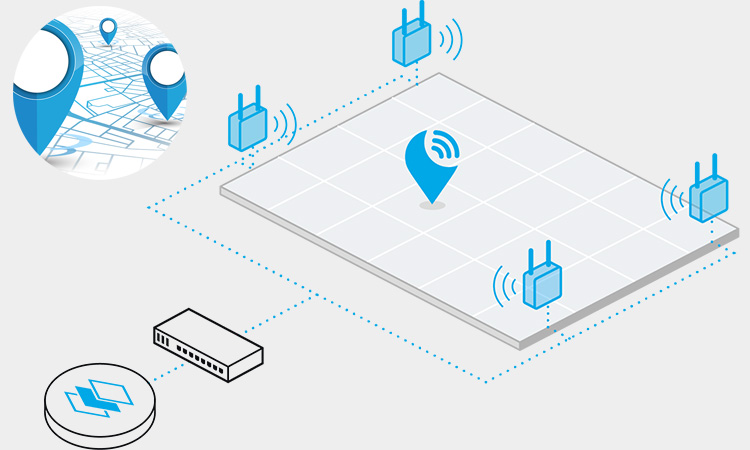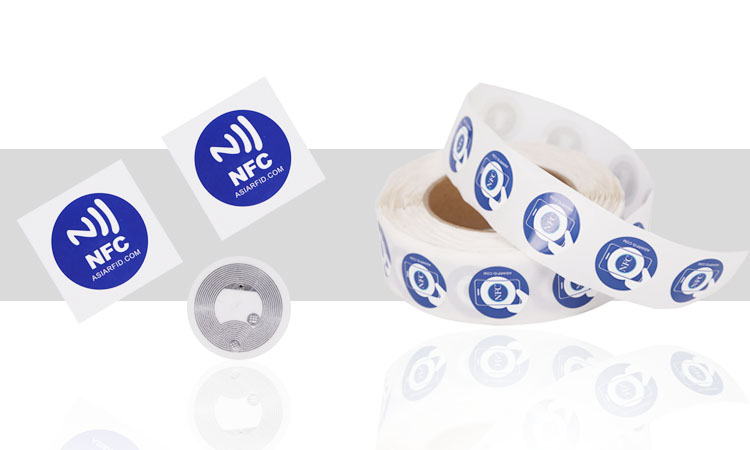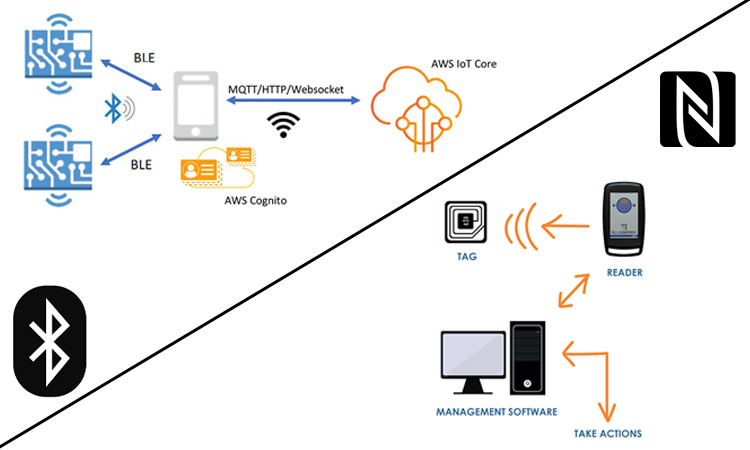I tag RFID semi passivi sono un tipo di tag RFID che può consentire la raccolta dei dati ma non necessariamente la lettura o la trasmissione dei dati. Con la maturità della tecnologia RFID, spesso possiamo vedere a varietà di etichette RFID nelle nostre vite. Puoi dire quali sono le etichette RFID attive, passive e semi passive in queste etichette? Quanto ne sai sui tag semi-passivi RFID? Successivamente, diamo uno sguardo più approfondito ai tag RFID semi-passivi.

Tag RFID semi-passivi, noti anche come tag BAP (Battery-Assisted Passive). Combina i vantaggi della tecnologia RFID attiva e passiva. Sono dotati di una batteria integrata che alimenta determinate funzionalità, come l'aumento della potenza del segnale durante la trasmissione dei dati. Ciò migliora l'efficienza e le prestazioni del sistema RFID.
È più popolare dei tag RFID passivi. Ha un raggio di lettura relativamente esteso e il corpo ospita sensori ambientali a bordo. Per l'articolo a cui è attaccato il tag, il tag semi-passivo è più utile per registrare la sua esperienza ecologica. Offre un'eccellente comodità al personale di laboratorio.
Un risultato del test mostra che se il tag è posizionato a 4 metri dal lettore e legge il tasso di uscita di 21, può raggiungere più di 50% del tasso di lettura in decibel.
Panoramica della tecnologia RFID
La tecnologia di identificazione a radiofrequenza (RFID) utilizza le onde radio per trasmettere dati tra tag RFID e lettori in modalità wireless. I tag RFID contengono un'antenna e un microchip che memorizzano e trasmettono informazioni. A differenza dei codici a barre, i tag RFID possono essere letti senza una linea di vista diretta. Ciò consente un'acquisizione dei dati più rapida e automatizzata.
I tag RFID semi-passivi possiedono caratteristiche distinte che li rendono la scelta preferita per le applicazioni incentrate sull'efficienza. Offrono una maggiore durata della batteria rispetto ai tag attivi, eliminando la necessità di frequenti sostituzioni della batteria. Inoltre, sono alternative convenienti ai tag completamente attivi, rendendoli più accessibili per le organizzazioni con vincoli di budget. La combinazione di funzionalità passive con funzionalità selettive assistite da batteria garantisce prestazioni ottimizzate e utilizzo delle risorse.
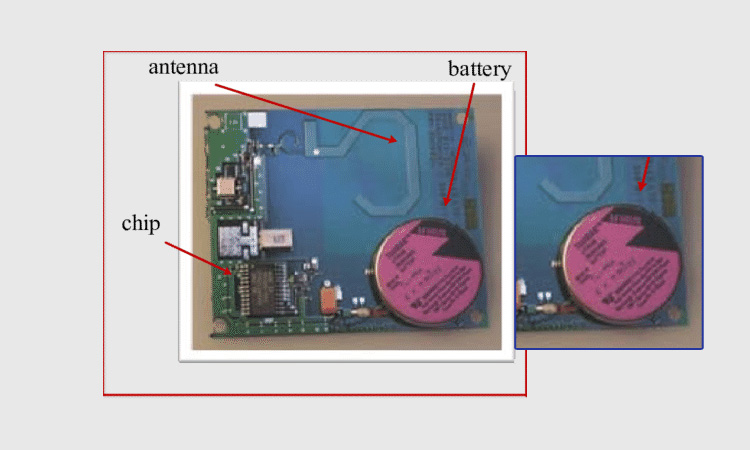
Le etichette RFID semi-passive contengono batterie per due motivi. Uno è che la batteria è necessaria per alimentare l'IC. Il collegamento diretto in genere fornisce alimentazione al tag e fornisce anche capacità di comunicazione del tag. La sua portata è generalmente molto più breve del collegamento di ritorno. Il link di ritorno si riferisce al viaggio di andata e ritorno dal lettore al tag e ritorno al lettore. Quindi ha una portata più estesa rispetto al collegamento diretto. Dimostra che il fattore limitante del campo di lettura dei tag passivi è l'alimentazione piuttosto che la distanza. Il tag non è la distanza dall'antenna che può decodificare il segnale, ma il punto dell'antenna in cui è alimentato. In questo modo, la batteria all'interno del tag può alimentare continuamente il circuito integrato e ha un raggio di lettura più esteso rispetto a un tag passivo.
Il secondo è che il sensore ambientale si trova sul tag. Il sensore ecologico richiede una fonte di alimentazione costante per garantire il funzionamento. Inoltre, richiede un livello di potenza superiore a quello del circuito integrato all'interno del tag. I tag passivi non hanno batterie interne, quindi non possono fornire una fonte di alimentazione affidabile per i sensori ambientali. Può solo ricevere passivamente l'energia fornita dal lettore, che è ancora molto limitata.
Se al tag RFID passivo viene aggiunta una batteria, questa può fornire un'alimentazione affidabile per alimentare il sensore e il circuito integrato del tag. Naturalmente, anche con una batteria, è più economico dell'RFID attivo.
Il sensore all'interno di un tag semi-passivo può raccogliere continuamente dati. Può anche trasmettere quei dati con un ID unico quando il lettore interroga il tag. Il tag semi-passivo è molto promettente. Ad esempio, può raccogliere automaticamente l'esperienza termica dell'oggetto mentre si muove. È adatto ad applicazioni come i farmaci o gli alimenti sensibili alla temperatura. L'etichetta semi passiva può registrare efficacemente quando l'oggetto supera un limite di temperatura specifico mentre è in transito. La registrazione del tempo consente un calcolo approssimativo della data di scadenza o dell'efficacia del farmaco. Naturalmente, sul tag possono essere collocati dei sensori in grado di rilevare temperatura, pressione, vibrazioni, ecc.
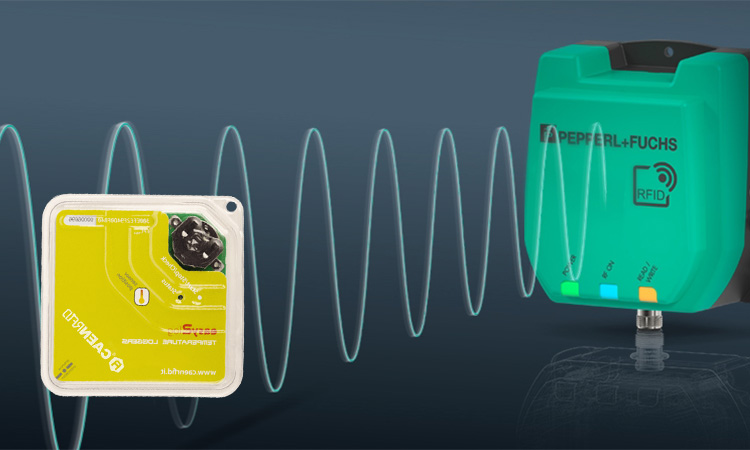
Nella maggior parte dei casi, un tag semi passivo RFID è dormiente. L'alimentatore al suo interno fornisce alimentazione solo alla parte che contiene i dati e non fa nulla con il resto. A causa del consumo energetico relativamente basso, può durare a lungo.
L'induzione elettromagnetica viene generata quando il tag entra nel campo di riconoscimento del lettore. Il lettore RFID attiverà prima l'etichetta con un segnale a bassa frequenza, in modo che il tag entri nello stato di funzionamento. Poi il segnale a microonde e la trasmissione dei dati del tag. Prima, l'attivazione del posizionamento di precisione del segnale a bassa frequenza, poi il lavoro con il segnale ad alta frequenza. Cioè, più lettori a bassa frequenza sono posizionati in luoghi diversi all'interno della copertura del segnale HF.
Questi lettori si basano sull'attivazione di etichette RFID semi-attive. Questi lettori attivano principalmente tag RFID semi-attivi. Lavorare in questo modo consente il posizionamento del prodotto, la raccolta di informazioni e le funzioni di consegna. Soddisfa in modo straordinario i severi requisiti ambientali di alcuni prodotti.
Vantaggi della RFID semi-passiva
- Rilevamento a lungo raggio
I tag RFID semi-passivi possono essere letti a distanze maggiori rispetto ai tag passivi, in quanto dispongono di una fonte di energia attiva per trasmettere le loro informazioni. Possono essere letti fino a 30 metri, a seconda dell'ambiente e del tipo di tag utilizzato. Questo li rende ideali per tracciare i beni su lunghe distanze nei magazzini o negli stabilimenti di produzione.
- Intervallo di lettura più lungo
La presenza di una batteria in un tag RFID semi-passivo consente un raggio di lettura più lungo rispetto a un tag RFID passivo. Questo perché il tag può trasmettere dati su distanze maggiori. Permette di leggere i tag da distanze maggiori. Ciò è particolarmente utile nelle applicazioni in cui i tag devono essere letti a distanza. Alcuni dei più comuni sono la gestione della catena di approvvigionamento e il monitoraggio dell'inventario.
- Precisione migliorata
L'energia fornita dalla batteria in un'etichetta semi passiva RFID consente inoltre di leggere il tag con maggiore precisione. Tali tag con batterie possono emettere segnali più forti. Rende più facile per il lettore ricevere i dati e riduce la possibilità di errori.
- Costo inferiore
Il costo di un tag RFID semipassivo è tipicamente inferiore a quello di un'etichetta RFID attiva perché non necessita di batterie aggiuntive, che è necessario sostituire periodicamente, così come di altri componenti, compresi i sensori. Questo li rende un'opzione conveniente per applicazioni di tracciamento su larga scala.
- Aumento della capacità dei dati
Grazie alla memoria interna e alla batteria, i tag RFID semi-passivi possono memorizzare più dati rispetto ai tag passivi. Ciò consente una tracciabilità più accurata degli asset e la possibilità di memorizzare informazioni più complesse, come i numeri di serie dei prodotti e i dati sulla posizione degli asset.
- Aumento della privacy
Le etichette semi-passive RFID sono spesso più sicure dei tag RFID passivi in quanto richiedono agli utenti di autenticarsi e quindi inviare un segnale di attivazione per leggere i dati del tag. Ciò può ridurre le possibilità che qualcuno legga maliziosamente il tag e ottenga l'accesso a dati riservati.
- Durevole e a bassa manutenzione
I tag semi-passivi RFID sono sigillati in plastica senza componenti esterni, il che li rende altamente durevoli e resistenti all'usura. Richiedono inoltre pochissima manutenzione in quanto non richiedono frequenti sostituzioni della batteria.
- Flessibilità
È possibile utilizzare tag semi RFID passivi in varie applicazioni poiché sono più piccoli e non richiedono fonti di energia aggiuntive. Grazie alle loro dimensioni ridotte, puoi utilizzarli in ambienti industriali e commerciali difficili.
- Facilità d'uso
Le etichette RFID semi-passive sono facili da configurare e gestire, in quanto è sufficiente attivarle con un segnale di attivazione e poi leggere i dati memorizzati nel chip. Questo li rende una scelta popolare per le applicazioni di tracciamento degli asset.
Contiene una batteria e un trasmettitore all'interno che emette attivamente un segnale al lettore. Quando il tag entra nel raggio d'azione del lettore, i due generano un campo magnetico di accoppiamento. Il tag trasmetterà attivamente i dati al lettore. Poiché l'etichetta RFID attiva è piccola, di solito viene incorporata nella custodia protettiva dello smartphone tramite rivetti, viti, ecc.
In genere viene utilizzato in applicazioni su larga scala, dove le etichette vengono lette su lunghe distanze. Le applicazioni più comuni sono quelle edilizie, petrolifere e altre applicazioni industriali e logistiche. In genere, può trasmettere dati ad alta frequenza e su lunghe distanze. Più comune è il pedaggio elettronico. È più significativo di quelli passivi e semi-passivi, ma ha anche una capacità maggiore. Ospita sensori ambientali che raccolgono temperatura, umidità e altri dati. Pertanto, può essere utilizzato come applicazione per proteggere beni sensibili e di alto valore.
Presenta anche ovvie caratteristiche limitanti. Richiede un costo più elevato, una durata limitata della batteria e dimensioni maggiori. Ha comunque un ROI molto impressionante per il monitoraggio e la protezione di beni di alto valore.
È un fattore passivo che si affida a un lettore per fornire energia. Per questo motivo, il lettore può generalmente leggere il tag solo a una distanza molto ravvicinata. Di solito, alcune applicazioni su scala ridotta e sistemi di inventario RFID utilizzano tag RFID passivi.
Ha anche i suoi innegabili vantaggi. Il suo costo per tag è inferiore rispetto agli altri due. Ha una durata maggiore e può essere incorporato in quasi tutti i prodotti. Viene utilizzato principalmente nelle applicazioni di tracciamento a livello di articolo, nel controllo degli accessi tramite badge, ecc.
Si tratta di un prodotto intermedio tra attivo e passivo. I tag RFID semi-passivi sono simili ai tag RFID passivi per dimensioni e produzione. Sono compatti e richiedono meno tempo per essere prodotti. Ma contiene anche una fonte di alimentazione come i tag RFID attivi.
Riunisce molti dei vantaggi di entrambi. Questi vantaggi includono un prezzo di produzione inferiore rispetto ai tag attivi e una distanza di lettura maggiore rispetto ai tag passivi. E il supporto di sensori parziali e funzioni di memoria. Naturalmente, ha anche uno svantaggio fatale: la durata limitata della batteria. Di solito viene utilizzato per: controllo degli accessi, localizzazione degli oggetti, gestione della localizzazione delle aree, allarmi di sicurezza, ecc.
Leggi anche: Sistema di inventario RFID: Quali sono i suoi pro e contro?
Questa tabella riassume alcune delle principali differenze tra tag RFID passivi, semi-passivi e attivi:
| Caratteristica | Tag RFID passivi | Tag RFID semipassivi | Tag RFID attivi |
|---|---|---|---|
| Fonte di potere | Nessuna fonte di alimentazione interna, alimentata dal lettore | La batteria interna alimenta alcuni componenti, ma non la trasmissione | La batteria interna alimenta sia i componenti che la trasmissione |
| Allineare | Raggio più breve, in genere inferiore a 30 piedi | Portata più lunga di quella passiva, fino a 100 piedi o più | Portata più lunga di quella passiva o semipassiva, fino a centinaia di piedi |
| Costo | Costo inferiore per tag | Costo per tag più elevato rispetto a quello passivo, ma inferiore a quello attivo | Costo più elevato per tag |
| Dimensioni | Peso più piccolo e leggero | Dimensioni e peso simili ai tag passivi | Più grande e più pesante |
| Applicazioni | Ideale per applicazioni a distanza ravvicinata, come il monitoraggio dell'inventario | Adatto per applicazioni in cui è necessaria una portata maggiore, come il monitoraggio delle risorse | Ideale per applicazioni in cui è richiesto il tracciamento in tempo reale a lungo raggio, come il tracciamento dei veicoli o la logistica |
Nota: Queste sono solo caratteristiche generali e le caratteristiche e le capacità specifiche dei tag RFID possono variare notevolmente a seconda del produttore, della frequenza e di altri fattori. Inoltre, alcuni tag RFID potrebbero rientrare in una "zona grigia" tra queste tre categorie. Ad esempio, possono essere chiamati tag "passivi assistiti da batteria" o "semi-attivi".
Le etichette RFID semi-passive in genere offrono intervalli di lettura più lunghi e funzionalità più avanzate rispetto ai tag RFID passivi. È adatto per applicazioni senza alta potenza e comunicazione continua di un tag RFID attivo. Alcuni esempi di applicazioni di tag RFID semi-passivi includono:
- Tag AeroScout T2: viene utilizzato per il monitoraggio delle risorse in ambienti sanitari, industriali e aziendali. Ha una lunga durata della batteria e può essere utilizzato per il monitoraggio interno ed esterno.
- Metalcraft Sentry Flex Tag: si tratta di un tag RFID semi-passivo robusto e durevole che può essere utilizzato per il monitoraggio delle risorse in ambienti difficili. Presenta un raggio di lettura fino a 20 piedi e può essere montato su superfici metalliche.
- Tag RFID Xerafy MicroX II: si tratta di un piccolo tag RFID semi-passivo ad alte prestazioni. Può essere utilizzato per tenere traccia di piccole risorse come strumenti, apparecchiature mediche e risorse IT. Presenta un raggio di lettura fino a 10 piedi ed è progettato per l'uso in ambienti difficili.
- Tag RFID Invengo XC-RF807: puoi usarlo per varie applicazioni, incluso il tracciamento delle risorse. È dotato di un raggio di lettura fino a 26 piedi e può essere montato su superfici metalliche.
In quali circostanze possono essere utilizzati?

Le etichette RFID attive possono funzionare a frequenze elevate, tra 433 MHz e 960 MHz. Questo le consente di avere un raggio d'azione molto più lungo per trasmettere i dati. I lettori possono leggere i dati memorizzati sul tag a una distanza di oltre 100 metri. È la scelta più adatta per il monitoraggio della posizione in tempo reale, l'inventario e la gestione degli asset. Oltre a questo, può operare su una varietà di altre frequenze. Soprattutto alle frequenze più basse, può essere utilizzato anche su materiali come acqua e metallo.
Le etichette RFID passive sono disponibili in diverse varianti. I più comuni sono gli intarsi e le etichette rigide. Gli inlay sono solitamente attaccati all'asset fisico tramite un adesivo, che è l'opzione più economica. I tag passivi rigidi sono realizzati in materiali come la plastica e il metallo, che sono robusti e durevoli. È ideale per i prodotti che devono rimanere in ambienti difficili per lunghi periodi.
Le etichette RFID semi-passive sono un ibrido dei due precedenti tipi di tag. È più conveniente rispetto a attivo e passivo. È l'opzione ideale ed economica per il monitoraggio ambientale e delle condizioni degli articoli.
Gli operatori devono scegliere l'etichetta corretta in base alle loro esigenze e in base alle caratteristiche del prodotto. Scegli tra attivo e semi-passivo in particolare. Se il tuo prodotto è unico, devi considerare l'ambiente circostante. A seconda della particolarità e dell'economicità del prodotto, i tag semi RFID passivi potrebbero essere la soluzione migliore per te. Supponendo che tu voglia monitorare e gestire l'inventario del tuo magazzino, i tag RFID passivi potrebbero essere la tua scelta ideale.
I tag RFID semi-passivi potrebbero non essere così conosciuti come i tag RFID attivi e i tag RFID passivi. Ma in termini di applicazioni pratiche di produzione, è più economico e ha una gamma di utilizzo più ampia. È adatto all'uso in prodotti con requisiti ambientali severi durante il trasporto.
Domande frequenti sui tag RFID semi passivi
-
Qual è il significato di semi-passivo?
Il termine "semi-passivo" si riferisce generalmente a un sistema o dispositivo che è in parte attivo e in parte passivo. In altre parole, combina elementi di entrambi i sistemi attivi e passivi. Questo approccio ibrido consente ai tag RFID semi-passivi di beneficiare di alcuni dei vantaggi dei sistemi attivi e passivi. In particolare, sono parzialmente alimentati e trasmettono i dati in modo attivo, come i tag RFID attivi. Tuttavia, hanno anche alcuni componenti passivi che consentono loro di funzionare con una batteria più piccola e a un costo inferiore rispetto ai tag completamente attivi.
-
Quanto costa un tag RFID semi passivo?
Ci sono diversi fattori che possono influenzare il prezzo dei tag RFID semi-passivi. Questi fattori includono il tipo di tag, l'intervallo di frequenza in cui opera e la quantità ordinata. In genere, i prezzi variano ampiamente, da pochi centesimi a diversi dollari per unità. È necessario notare che il costo dei tag RFID semipassivi può anche variare in base alle condizioni di mercato e ai requisiti specifici. Si consiglia di consultare un fornitore affidabile per le informazioni sui prezzi più aggiornate.
-
Se sei curioso di conoscere la gamma di tag RFID semi-passivi, ci sono diversi fattori che possono influenzarla. La portata di questi tag dipende in genere dalla loro frequenza e potenza e può variare da 10 a 100 piedi. Questa portata può essere estesa utilizzando un'antenna più grande. Inoltre, la portata effettiva di un tag RFID semipassivo dipenderà anche dall'ambiente specifico e dalle apparecchiature utilizzate.



